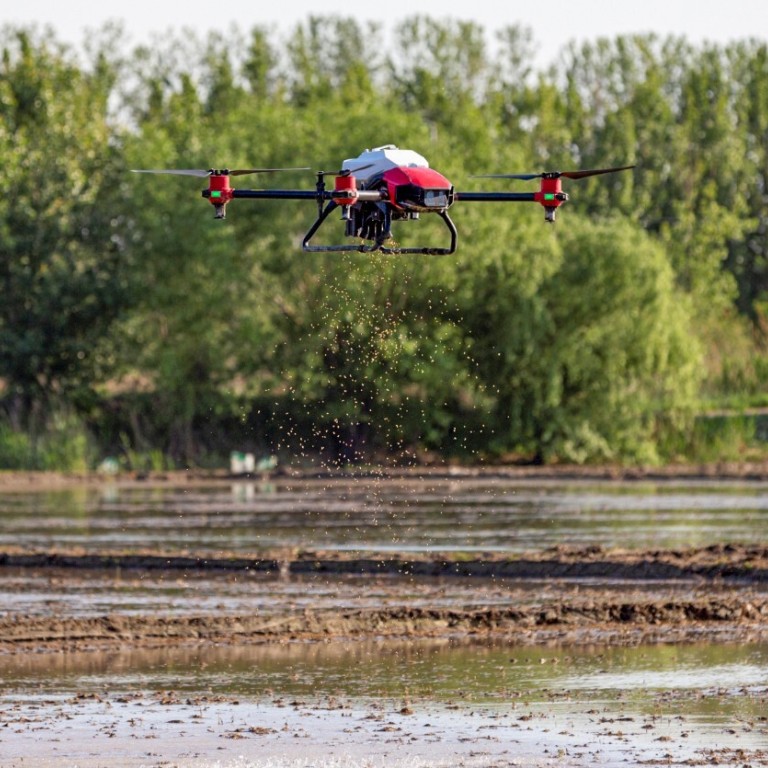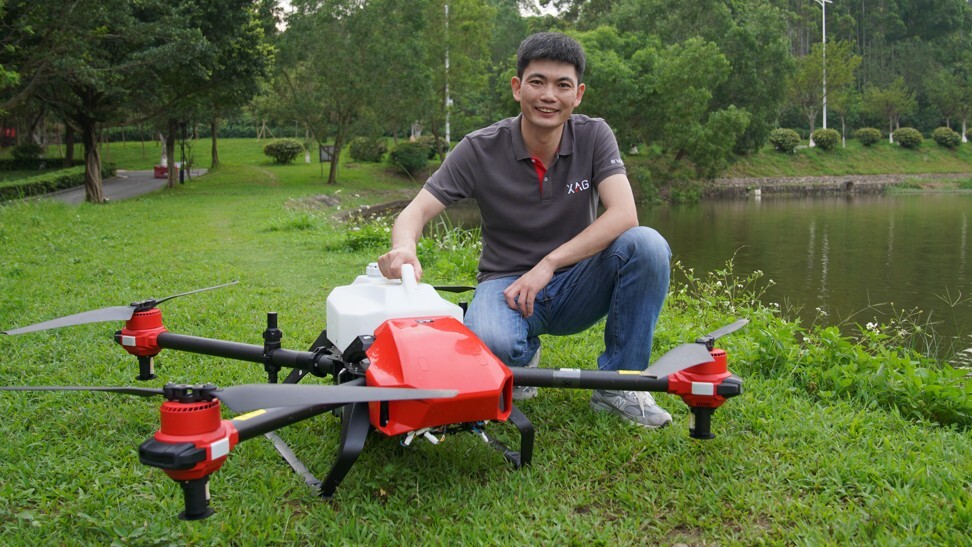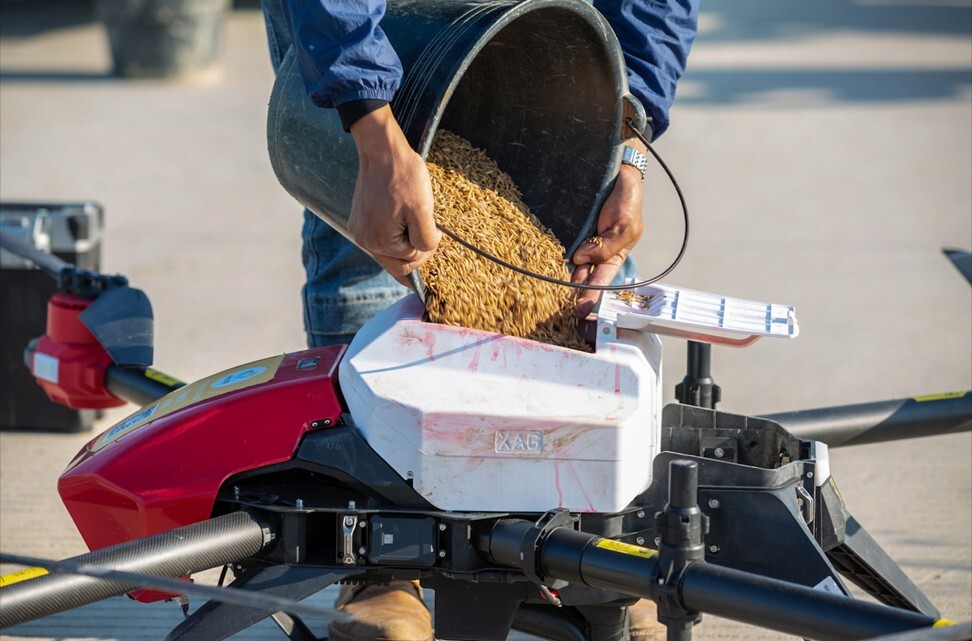
Drone maker XAG in drive to automate rice farming in China amid labour shortage, Covid-19
- XAG, one of China’s largest makers of agricultural drones, expects its JetSeed direct seeding system to become more widely adopted
- Competition with DJI in China remains heated, as the world’s biggest maker of commercial drones sharpens its focus on industrial applications
The winds of change are set to roar through the farmlands of China, the world’s largest producer and consumer of rice, as drones start to take over planting of the staple crop.
It expects more small rice farmers and large farm owners to automate, replacing manual seed planting, as a means to raise efficiency, while mitigating labour shortage and the threat of Covid-19.

The urgency of automating how China’s most important crop is planted came to a head early this year, when China’s economy was disrupted by the coronavirus outbreak.
When Covid-19 loomed over the spring planting season, Guangzhou-based XAG said it helped mobilise drones for use by various rice farmers, who had already been challenged by rural worker shortages, to directly seed their paddies. Direct seeding refers to the process of sowing seeds into the fields without nursery cultivation and transplantation, while cutting down on water use and preserving the soil.
“The pandemic showed the necessity and increased demand for automated farming,” Peng told the South China Morning Post. “Smart devices and systems which can raise efficiency, precision and ensure environmental protection represent the direction of modern agriculture.”
Compared with large-scale agriculture in major economies like the US, most Asian countries where rice is their staple crop cannot use large expensive machinery, such as driverless tractors, because of the complex terrain and small size of many farms. By comparison, drones are more agile and economical for rice farmers in this region.
China’s migrant worker exodus has created demand for drone pilots to help ageing farmers
XAG describes JetSeed as an “intelligent granule spreading system”, which can be mounted on the bottom of its agricultural drones, whether old or new. This system’s parameters are set up via an XAG app. It ensures that the proper amount of seeds are accurately spread into the targeted topsoil, while maintaining optimum spacing and uniform plant density, according to the company.
It said JetSeed also enables drone seeding at night, which helps ease the issue of less available manpower in China’s rural farming communities. According to recent estimates, an agricultural drone can seed 50,000 square metres of land per hour, which would otherwise take 50 to 60 field workers to complete.

Still, competition in agricultural drones in China is expected to remain heated, as Shenzhen-based DJI – the world’s biggest maker of commercial drones – has sharpened its focus on industrial applications, led by its Matrice line of drones. DJI and XAG are estimated to have a combined 80 per cent share of China’s overall drone market.
With more than 1.4 billion people to feed and plans to cultivate 4.6 million hectares of rice this year, China remains a big enough market for those two companies amid government’s direction that industries become smarter with automation and digital infrastructure. There were close to 50,000 agricultural drones in service across China last year, according to a report by state-run broadcaster CGTN in November.

